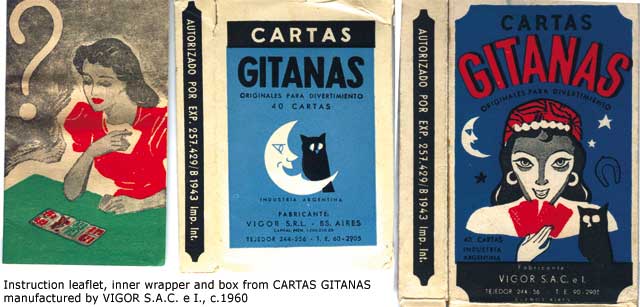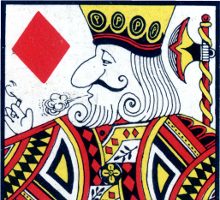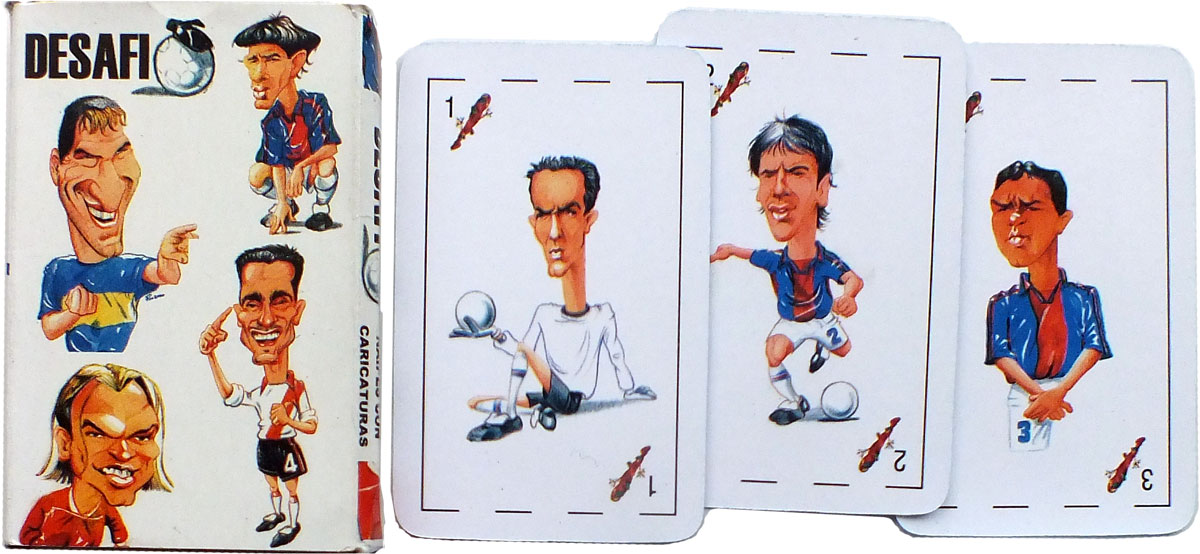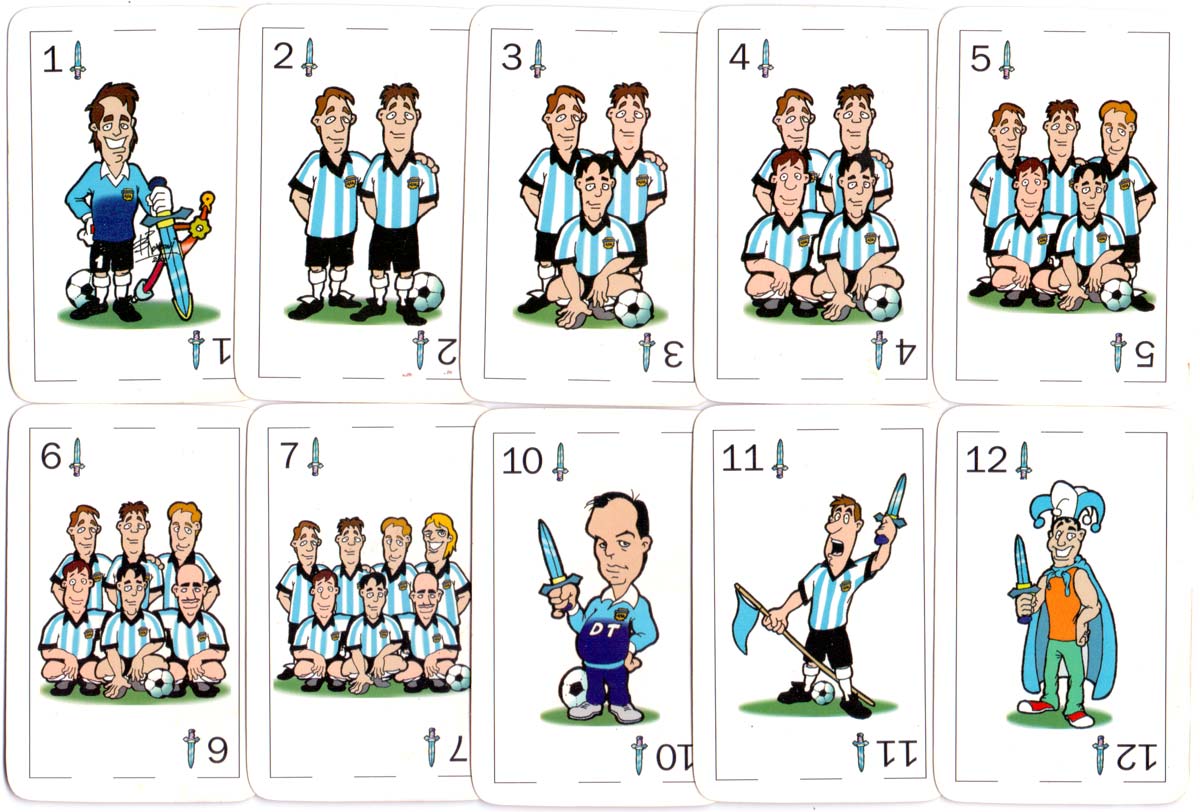Argentinian Playing Cards - Naipes Argentinos
Playing cards were introduced to the Americas with Spanish explorers such as Columbus or Cortés.
Playing Cards in Argentina employ Spanish suit symbols: cups, swords, coins and clubs (termed copas, espadas, oros and bastos).
See List of Manufacturers →
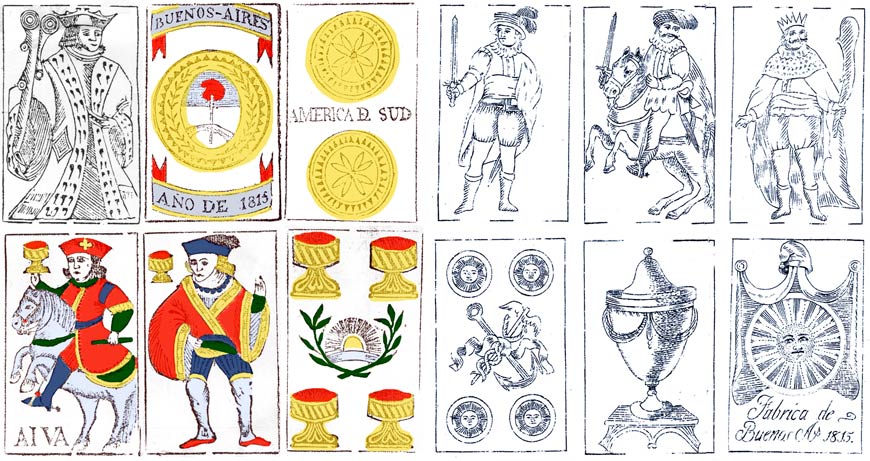
Above left: Argentinean playing cards, made in Buenos Aires in 1815 by M.J. Gandarillas, a Chilean immigrant. The ace of coins shows the emblem of the newly established Federal Republic, the four of cups a rising sun within a laurel wreath. The remainder of the pack resembles the Spanish National pattern. more →
Above right: ace of coins and king of swords by José Maria Quercia y Possi, an Italo-Chilean immigrant who also set up business in Buenos Aires in 1815. The pack is based on the Spanish Maciá pattern. more →


Above: La Primitiva, Bs As., playing card manufacturer c.1880-1920 more →
It is assumed that playing cards had been introduced to the Americas with explorers such as Columbus or Cortés. Cards would almost certainly have travelled from Spain, and stories are told of them being improvised from drum-skins. Later, locally-made cards were deemed illegal by the Spanish authorities who wished to exploit their monopoly, for which purpose the 'Real Fábrica de Naipes de Macharaviaya' (1776-1815) was established, officially supplying playing cards for Central and South American colonies and controlled by the 'Ministerio de Hacienda' in Madrid. These cards are in the so-called 'National Spanish' style.
However, there were many problems with the cards, including poor quality and high prices in comparison with locally manufactured ones. In 1815 the 'Real Fábrica' was closed and once again local playing card industries were legally licensed to operate in their respective countries. Manuel José de Gandarillas was the first manufacturer to set up business in 1815, and by 1830 there were at least four playing card manufacturers operating in Buenos Aires. See complete list here.
Argentinian playing cards have followed Spanish styles, notably the Maciá, Cádiz and Catalan patterns which became established during the 19th century based on models imported from Spain, notably by Fló Hnos and Bertrand Domec.
Duty was first introduced on playing cards in Argentina in 1892, as part of the Internal Duties law, and in 1896 the first duty labels were printed to be used on packets of 1 gross packs. In 1899 these were replaced by bands, initially for a dozen packs and then for single packs more →
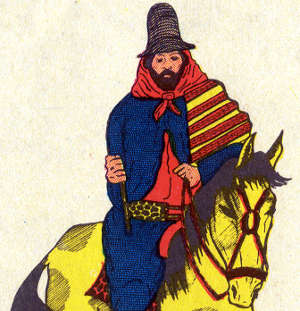
Many packs published in Argentina contain references to Argentina's national identity such as National Symbolism, Politics, Gauchos, Tango dance, Bull Breeding and Folklore. However, for everyday games requiring a Spanish-suited pack, a simple version of the Spanish Catalan pattern is commonly used. Native Indian cards, modelled on the Spanish pack, are a curious spin-off.
Several varieties of Cartomancy, Fortune-Telling, Tarock and Tarot packs have been produced in Argentina, as well as a number of souvenir packs, card games, advertising packs, etc.
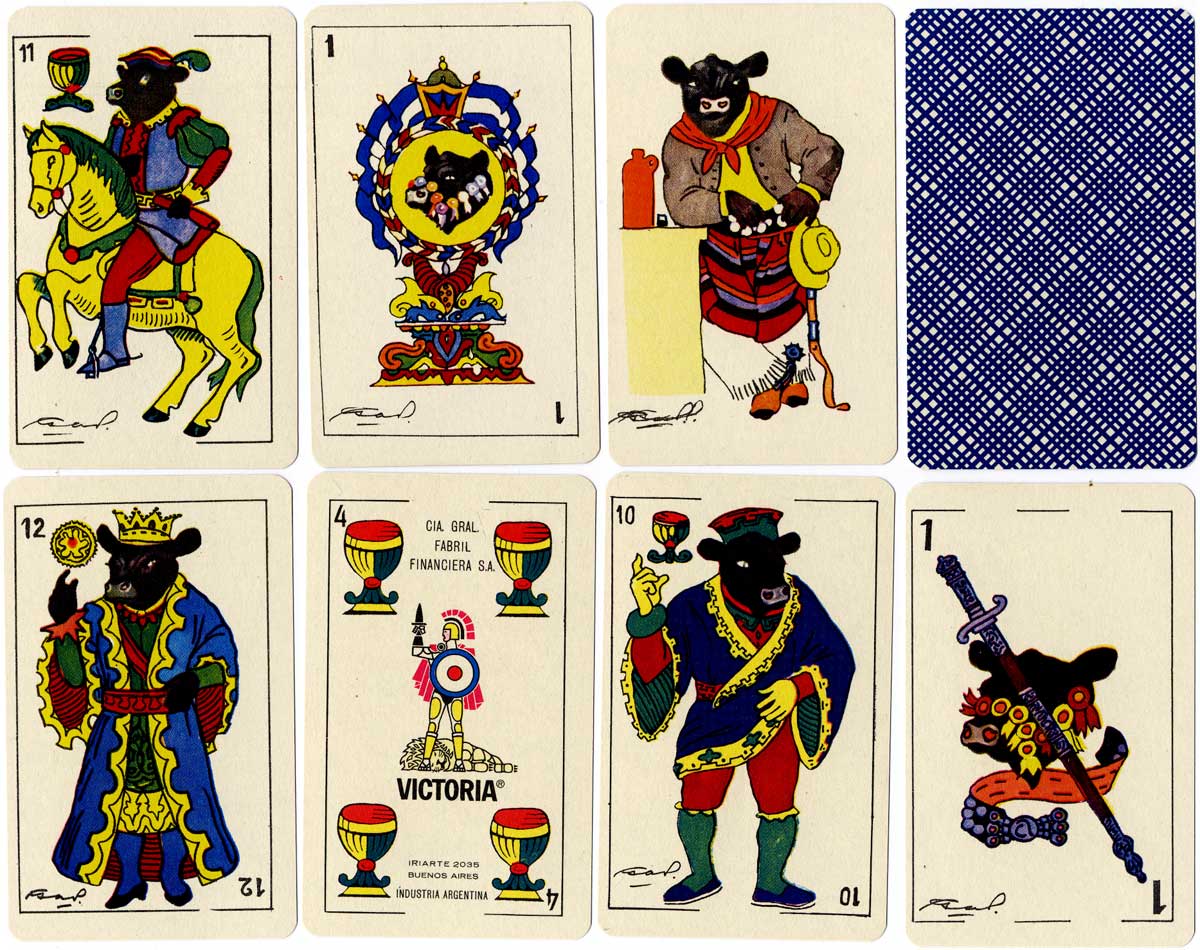
Above: Angus playing cards designed by Gustavo A. Pueyrredón, c.1975 more →
Football
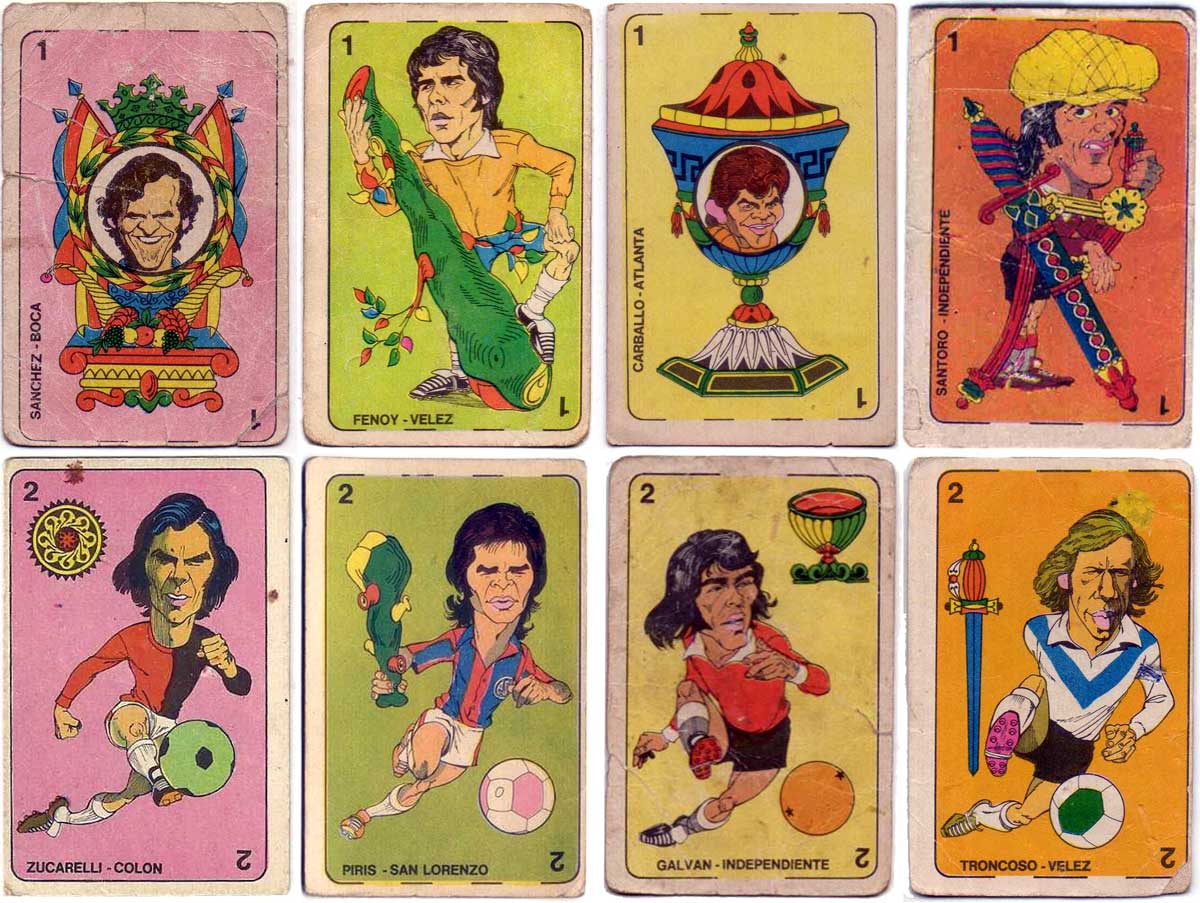
Above: Figuritas Golazo collectible football cards, 1973 more →

Above: Axe Deodorant Playing Cards by Zecat, Argentina, c.2004 more →

Above: 125th anniversary of the Argentinian “Servicio de Hidrografía Naval”, 2004 more →
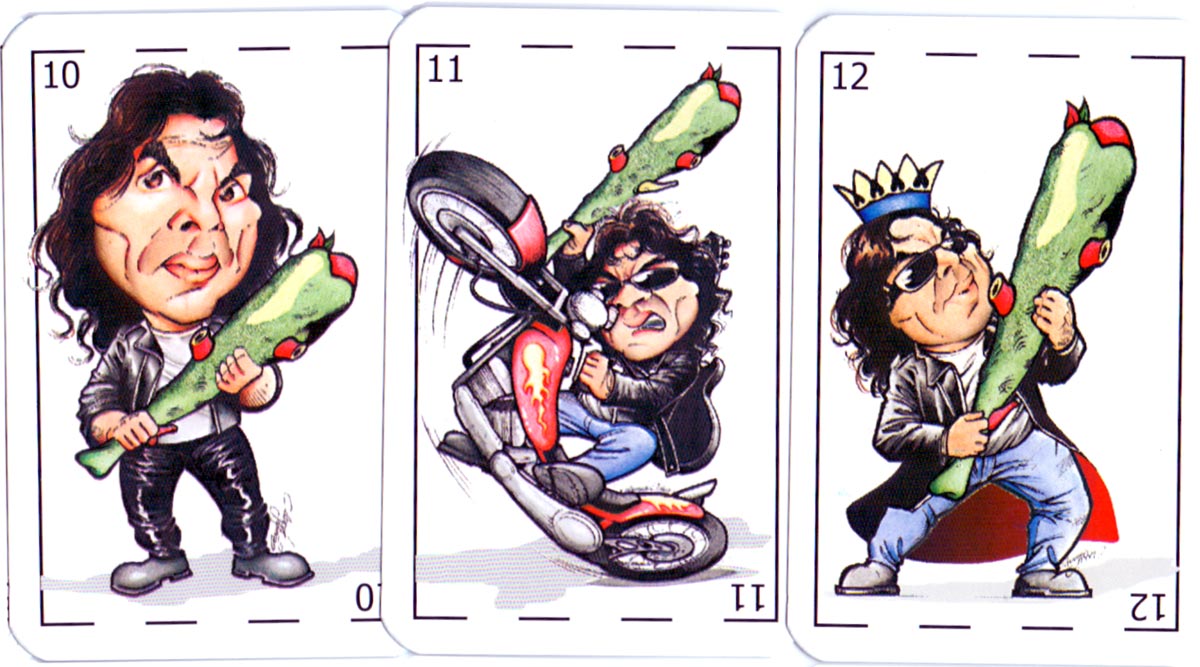
Above: Naipes Truco “Únicos” designed by Gerardo N. Perez, 2006 more →

Above: Naipes Gauchescos Argentinos, 2004. more →

Above: ‘Naipe Criollo Caraí Pujol’ with Gaucho designs by Julio F. Parada Seifert, 2005. more →
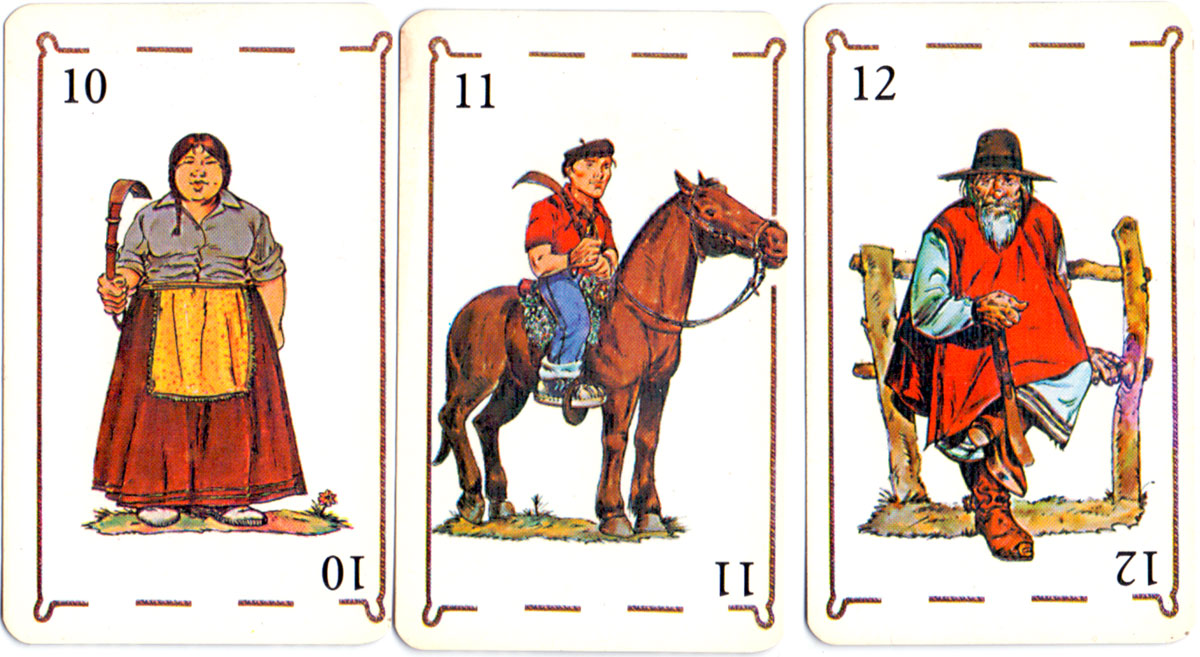
Above: ‘Gaucho’ Spanish-suited deck made in Argentina, 2001. more →

Above: El Rodeo Talabartería. more →
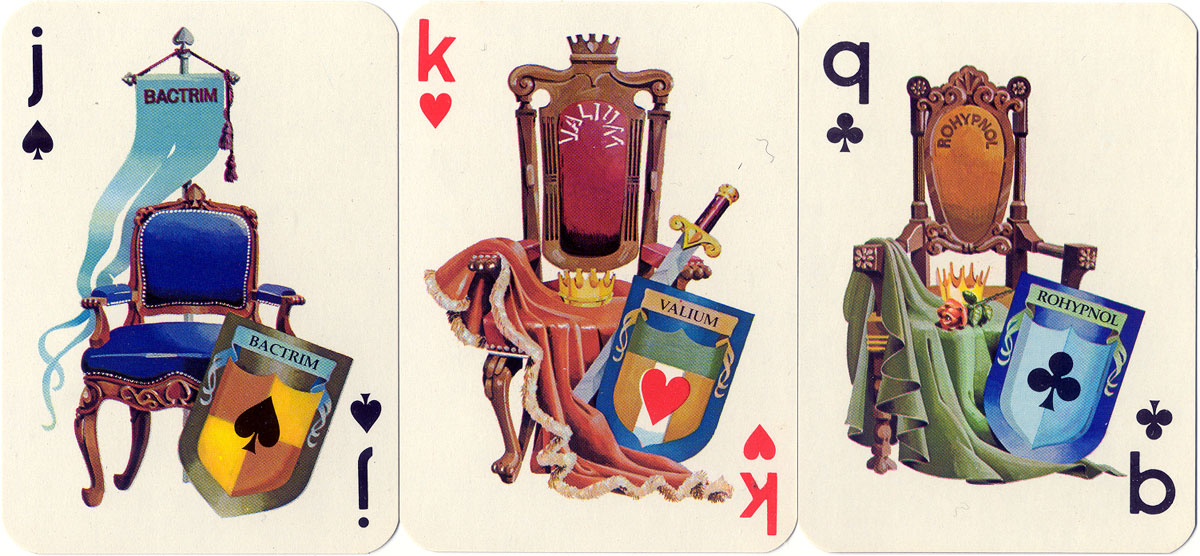
Above: Roche Pharmaceutical deck, 1980s more →

Above: Cartas Precolombinas, 2001 more →
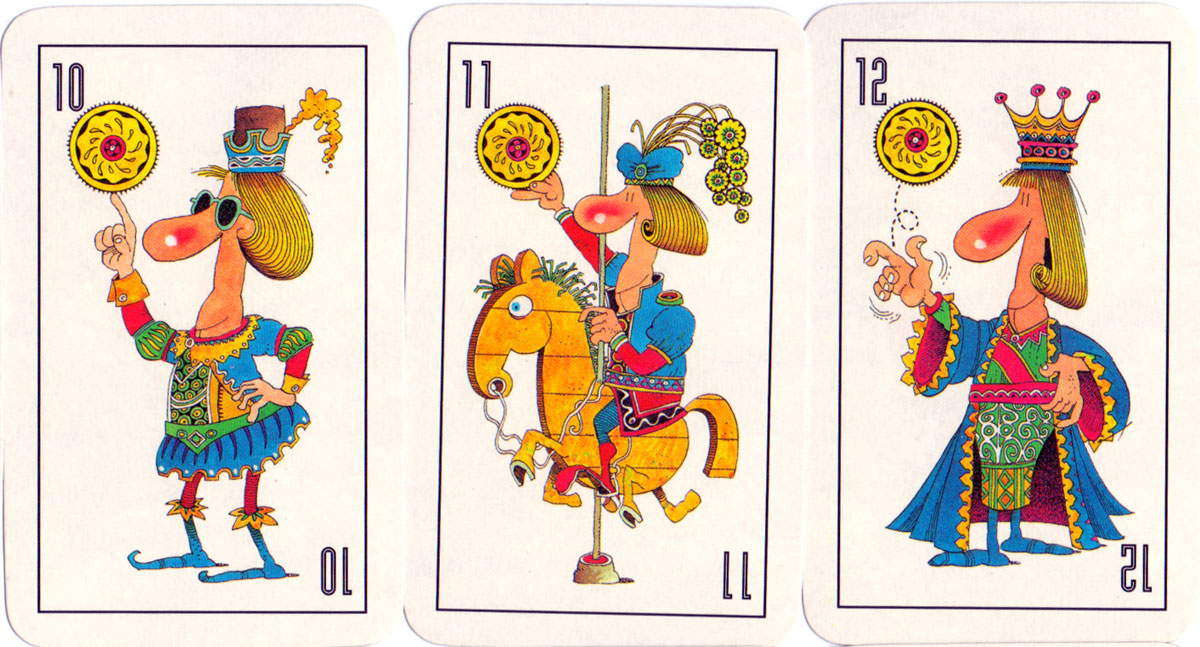
Above: Naipes Garaycochea, c.2002 more →

Above: ‘Black Tango’ playing cards published by Gardés Editorial, 2003 more →

Above: Naipes de Poker “Milonguita”, Gardés Editorial, 2003 more →
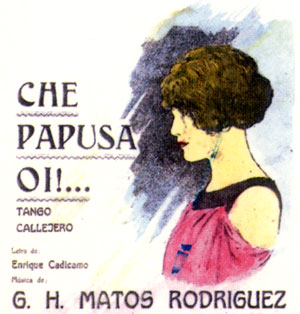
Above: La Cumparsita Tango deck, 2001 more →
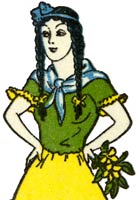
Apeles S.A.

Camilloni, Conrado & Carlos
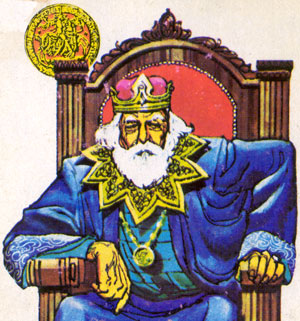

Gráfica 2001 - Naipes La Española
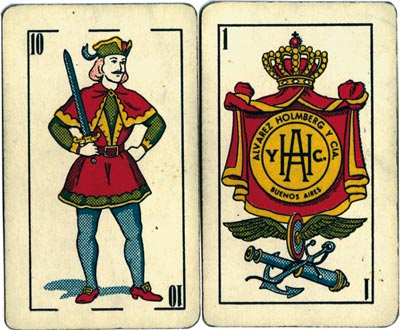
Juegos Victoria (Jugetes Royal)
Ministerio de Salud de la Nación (Ministry of Health)
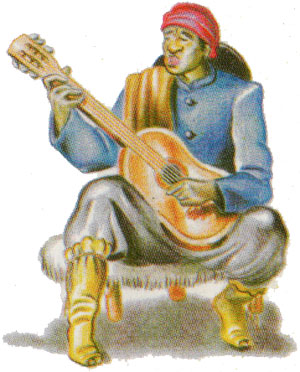
Naipes Castilla
Obsequios Empresarios Argentinos
Industrias Gráficas Pesout S.A.
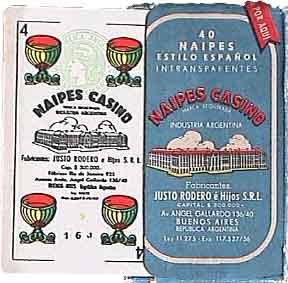
Article in Infobae 10th May 2005
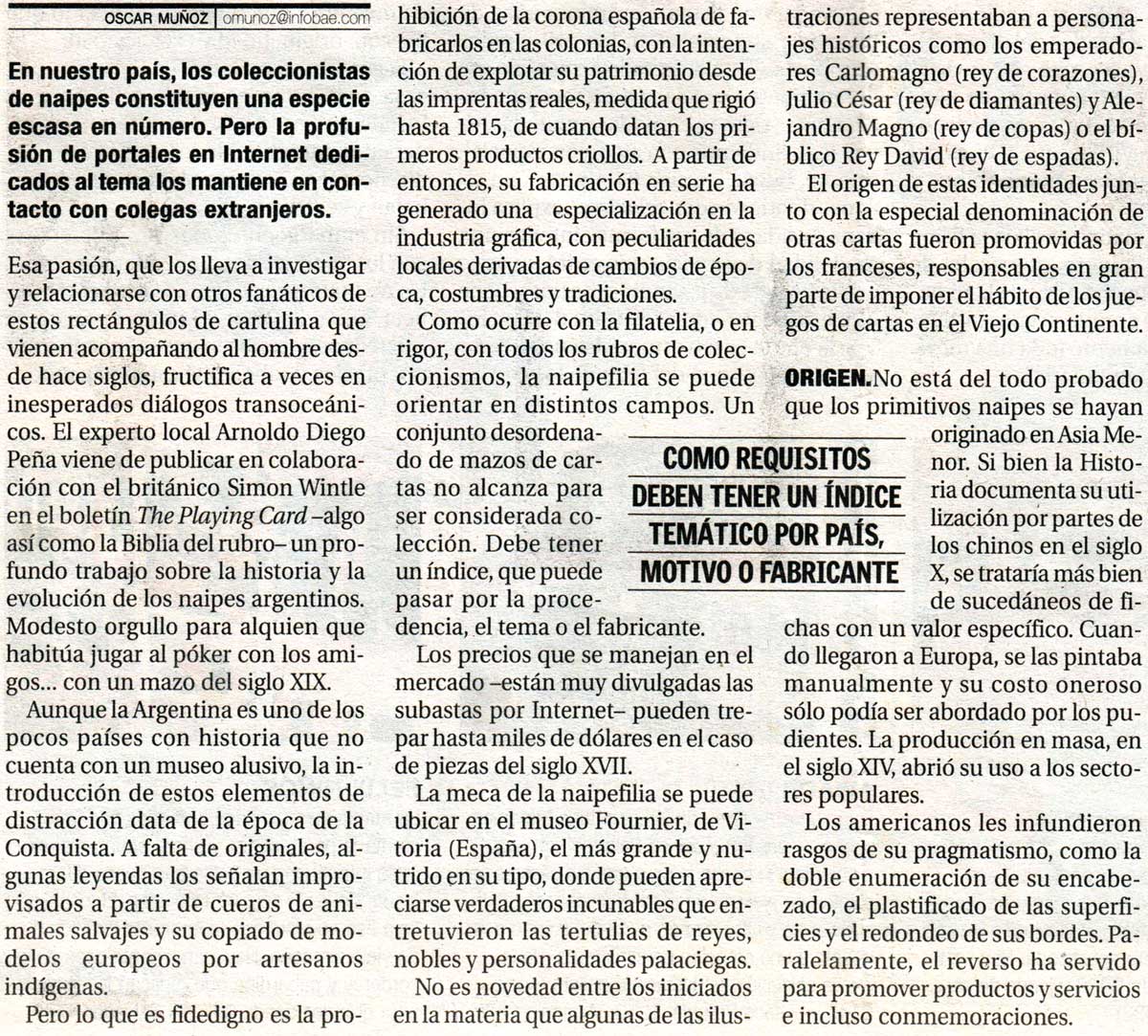

By Simon Wintle
Member since February 01, 1996
I am the founder of The World of Playing Cards (est. 1996), a website dedicated to the history, artistry and cultural significance of playing cards and tarot. Over the years I have researched various areas of the subject, acquired and traded collections and contributed as a committee member of the IPCS and graphics editor of The Playing-Card journal. Having lived in Chile, England, Wales, and now Spain, these experiences have shaped my work and passion for playing cards. Amongst my achievements is producing a limited-edition replica of a 17th-century English pack using woodblocks and stencils—a labour of love. Today, the World of Playing Cards is a global collaborative project, with my son Adam serving as the technical driving force behind its development. His innovative efforts have helped shape the site into the thriving hub it is today. You are warmly invited to become a contributor and share your enthusiasm.
Related Articles

Visite Mexico
Promoting Mexican tourism with 54 different photographs in full colour.

Jockey Club de Buenos Aires
Spanish-suited pack by Chas Goodall & Son Ltd for the Jockey Club, Buenos Aires.

Catalan pattern by B.P Grimaud
Standard Spanish Catalan pattern deck made in Paris by B.P Grimaud.

Archaic Spanish proof sheets
2 x uncoloured proof sheets of archaic Spanish-suited playing cards produced for “New Spain”, possib...

Peintres Latino Americains
Original artwork by 18 different Latin American artists.

B.P. Grimaud pack for Bolivia
Spanish-suited pack made in France for sale in Bolivia, c.1880.

South American Costumes
Costumes of people of Brazil, Peru and Mexico, with views of Rio de Janeiro on the aces.

Félix Solesio e Hijos
Félix Solesio e Hijos - Real Fábrica de Madrid - Spanish National pattern for Venezuela

Parisian Spanish pattern by Fossorier, Amar et Cie
‘Parisian’ Spanish pattern published by Fossorier, Amar et Cie (Paris), c.1902.

Félix Solesio e Hijos
Félix Solesio e Hijos, Fábrica de Macharaviaya, Spanish National pattern for West Indies, 1801.

Naipe de Bridge
Standard English pattern pack made in Ecuador, c.1970.

Christopher Columbus 5th Centenary playing cards
Fifth Centenary of the Discovery of America playing cards by published by Heraclio Fournier.

Parisian style Spanish deck by Grimaud
Parisian style Spanish deck by Grimaud for export to Uruguay.

Egyptian Tarot
Egyptian Tarot inspired by ancient Egyptian art, mythology, and iconography, published by Naipes La ...

Naipes Criollos
“Naipes Criollos” Gaucho playing cards, 1995.

Naipes Cardón
Naipes Cardón designed by Mario Luis Rivero depicting traditional Argentine culture and identity, 20...
Most Popular
Our top articles from the past 28 days



